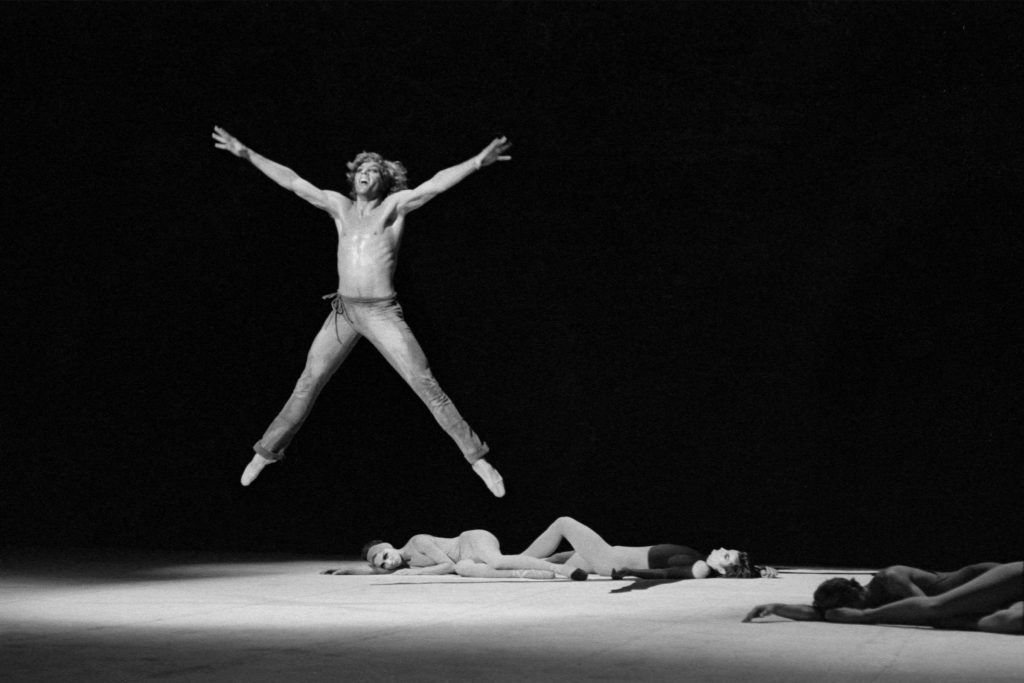Mass for today
04.20.2018Messe pour le temps présent (Mass for today), by Karine Le Bail
Back in 1967, inside the Palais des Papes (Popes’ Palace), a Ballet-Mass was going down a storm. For the first time at the Avignon Festival, dance hit all the buttons. Maurice Béjart presented his ballet Romeo et Juliette after the work of Hector Berlioz created the year before, which caused a stir when his dancers announced « Make love, not war » on stage. But it was the creation of La Messe pour le temps présent, with music by Pierre Henry and Michel Colombier that really captured members of the public.
As a kind of earthly liturgy, the radiography of man on a quest for God, this ballet was conceived as a « ceremony » in nine episodes – « The Breath »; « The Body »; « The World »; « The Dance »; « The Couple »; « Mein Kampf »; « The Night »; « Silence » and « The Wait ».
It starts off with a few people dotted in front of the huge walls of the Popes’ Palace. They’re immobile. Then the audience hears the sound of someone breathing. Where’s this sound coming from? Does it mean a man is being born? Then we have « The Body » and against a backdrop flooded in light we see two ballet dancers in pink tights practising their moves at the bar, fully aware of their bodies, whilst a man sits in the middle, cross-legged on the ground, engrossed in a text by Buddha…
In total, nine scenes. Nine « ceremonies of the world » that unfurl on stage, with young people in overalls reading newspapers; an incarnation of the « Couple » that includes a pas de deux by Jorge Donn and Laura Proença in white tights in the darkness, elevated on a white promontory; « Mein Kampf » with foul, vulgar Nazi marches dominated by the sound of Hitler’s voice; and then « The Night », where dance asserts itself as the supreme discipline imposed on the human body, and Nietzsche’s words (which served as an epigraphy for the work): « I would believe only in a God that knows how to dance ».
For posterity, it is obviously the superb and unrestrained ronde by the boys and girls in « Psyche Rock » that proved to be the global sensation. But in Avignon, after « The Silence » and « The Wait » inspired by the Tibetan Book of the Dead that symbolised the final return of the soul to itself before the supreme test of death, the stage remained empty for some considerable time before the dancers returned in absolute silence, staring straight ahead as the lights came back on in the hall and the audience of 3,500 were left open-mouthed in surprise.
Karine Le Bail is an historian (CNRS / EHESS) and the producer of the A pleine voix radio programme (France Musique).


